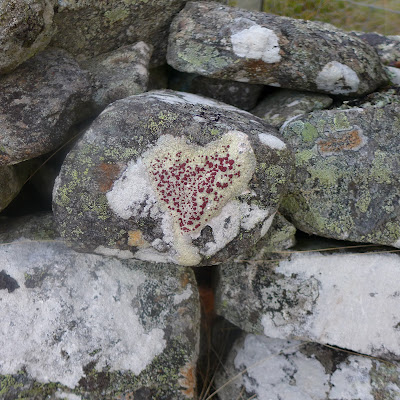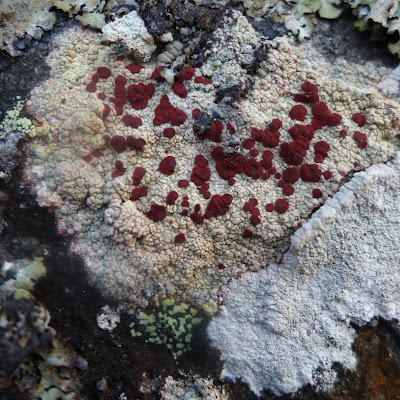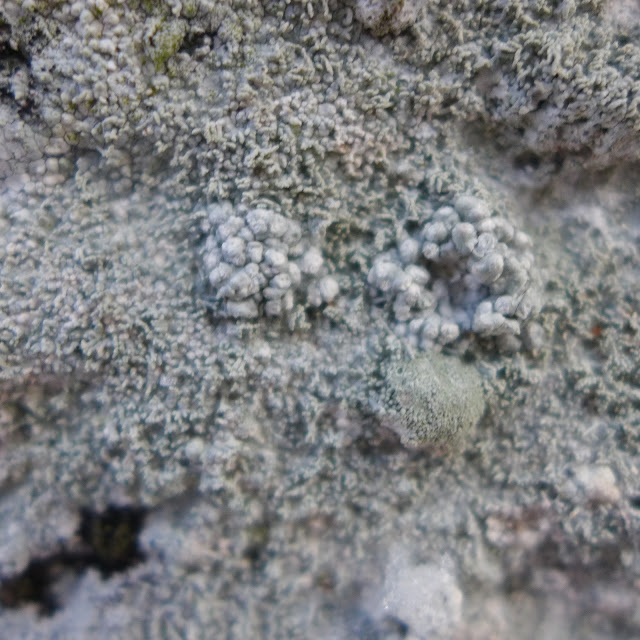In my (limited) experience, most lichen identification depends a lot on matching named photographs to what you have found. This is how I started off identifying wildflowers, flicking through the book to find a picture that looked similar to what I was looking at. Once I started to record what flowers I had found, it became important to make an accurate ID and I moved on to using keys, beginning with a really useful book called "The Wild Flower Key" by Francis Rose.
With flowers, the keys concentrate on what you can see with the naked eye, or sometimes a lens to see small details such as hairs.
However, although there are keys in my lichen book, they quite often use details which amateur observers might not have access to, such as what the spores look like under a microscope, or chemical tests. Also the lichens tend to have just scientific names rather than common ones that are easy to remember, so I have been giving some lichens my own names to try and remember them. When I spot a new lichen, my usual method is to take lots of photos to look at when I get home and compare with photos on the internet.
I found this bright orange lichen on a wall on Newtonmore Main Street, along with some grey lichens and mosses.
I thought an orange one might be easy to identify as there are not that many orange or yellow lichens and most of them have names that begin with Xanthoria.
 |
| Xanthoria parietina on an aspen tree |
 |
| Xanthoria parietina on the left; the new lichen on the right |
I can see that they are different - instead of leafy lobes, the new lichen has smaller lobes that look a bit like dog bones - or when looked at more closely - it looks like battered tempura! So tempura lichen became my name for it...
 |
| (the lines are 1mm apart) |
With some help from the Scottish Lichens Facebook group, it got its real name, Xanthoria elegans, and it also has another name - the Elegant Sunburst lichen.
(Update - after showing some of the photos to another lichen group, they did not think it was Xanthoria elegans - but not enough info to decide what Xanthoria species it was - so it will have to remain as tempura lichen for the time being!)
There is another lichen that reminds me of dog bones, Hypogymnia tubulosa. So here is a quiz for you - can you spot the dog bone lichen?













